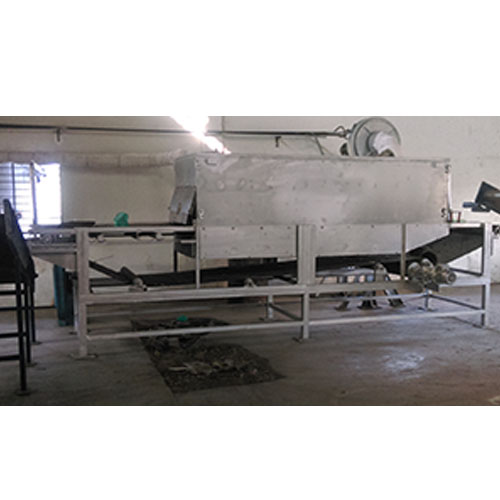Scrap preparation
Scrap preparation is most important for the decoating process. The presentation of scrap to the decoating kiln is very important for effective processing. Ideally the scrap feed should consist of individual pieces or shred having a large surface area /volume ratio. The pieces of scrap should be of a size and shape to facilitate transport in to the kiln without bridging or sticking. Typically pieces of about 25 -50 mm square are considered to be ideal.
A large surface area is required to maximize gas/metal contact and so minimizing heating rate and reaction time.
The reduction of as received scrap in to a form suitable for decoating is usually undertaken by shredding machine.
The decoating process
More than 90 % of decoating is currently carried out in rotary kiln. The choice of rotary kiln is between parallel and the counter flow type. Hot gas flows through the kiln under controlled condition of temperature and oxygen content. The kiln exit gas containing evolved combustible is passed to an after burner and is combusted. A significant proportion of the combustion product is returned to the kiln for the processing, thus creating a recirculation loop. The most obvious choice is counter flow type kiln. In counter flow kiln the hot gases from the afterburner enters the kiln at the metal discharge end and flows counter to the scrap movement. This ensures the highest temperature and oxygen are in contact with the scrap exactly where it is needed. Consequently, counter flow kiln produce very good quality decoating. As the gas travels from discharge to charge end of the kiln there is an accompanying reduction in temperature excursion and removing the necessity for water sprays. Counter flow kiln do not require an internal refractory lining
The economics of decoating
It is generally acknowledged that decoating will achieve higher recovery rates than non decoating systems. The main reasons for the increase in recovery are
- Reduced melting time in furnace - The faster a scrap is melted the lower the losses will be.
- Cleaner materials charged in to the furnace
It is well documented that the surface coating of a scrap has a profound effect on the subsequent melt loss. In general the higher the % coating the higher the losses will be. The effect differs between alloy types. For example, alloys with higher magnesium contents usually exhibit increased losses. Metal loss figures for UBC vary between 15-30% for processes that do not de-coat prior to melting. A well set up decoating and melting operation can limit metal loss to less than 10%. This difference of about 5% can yield huge saving even for small user.
